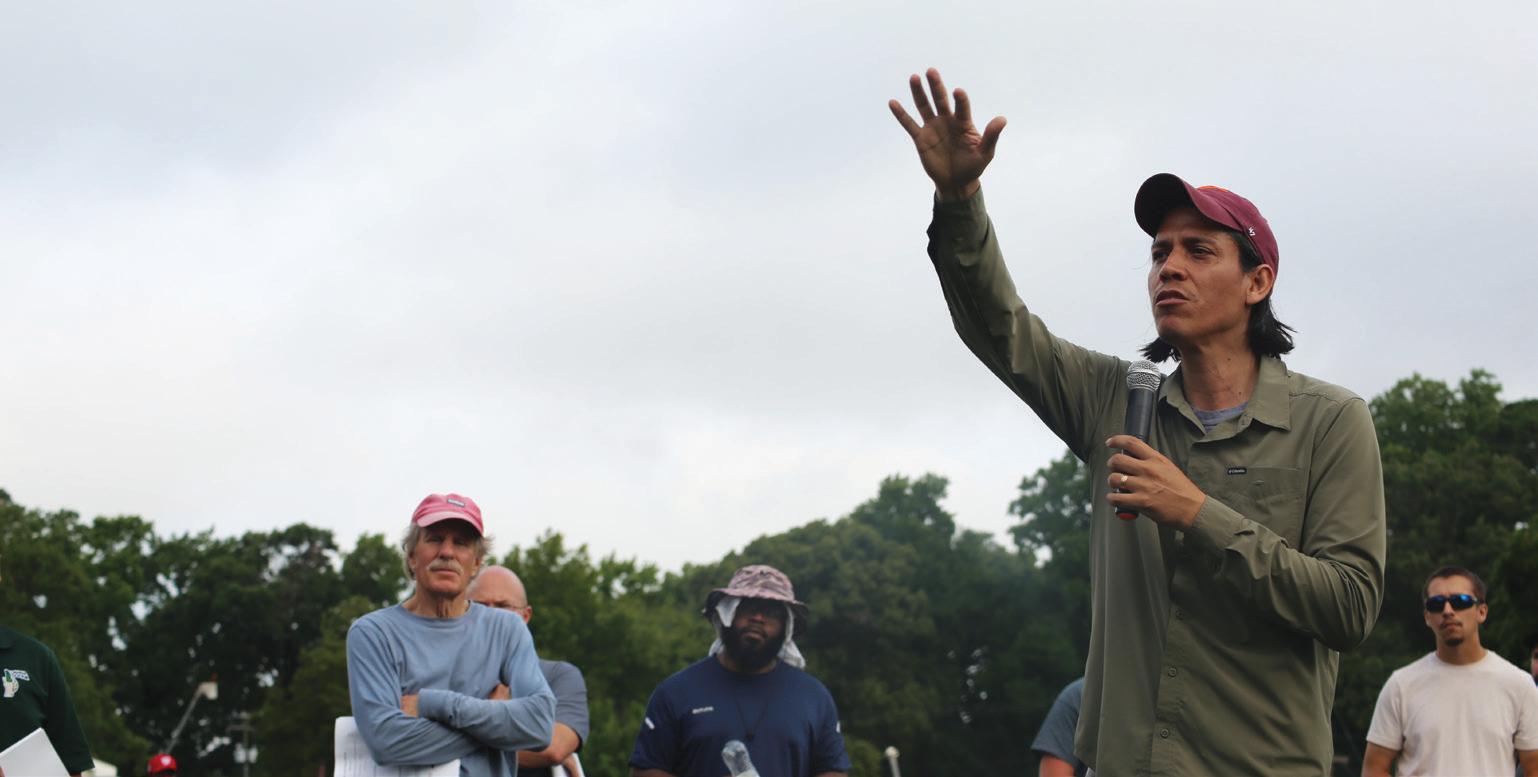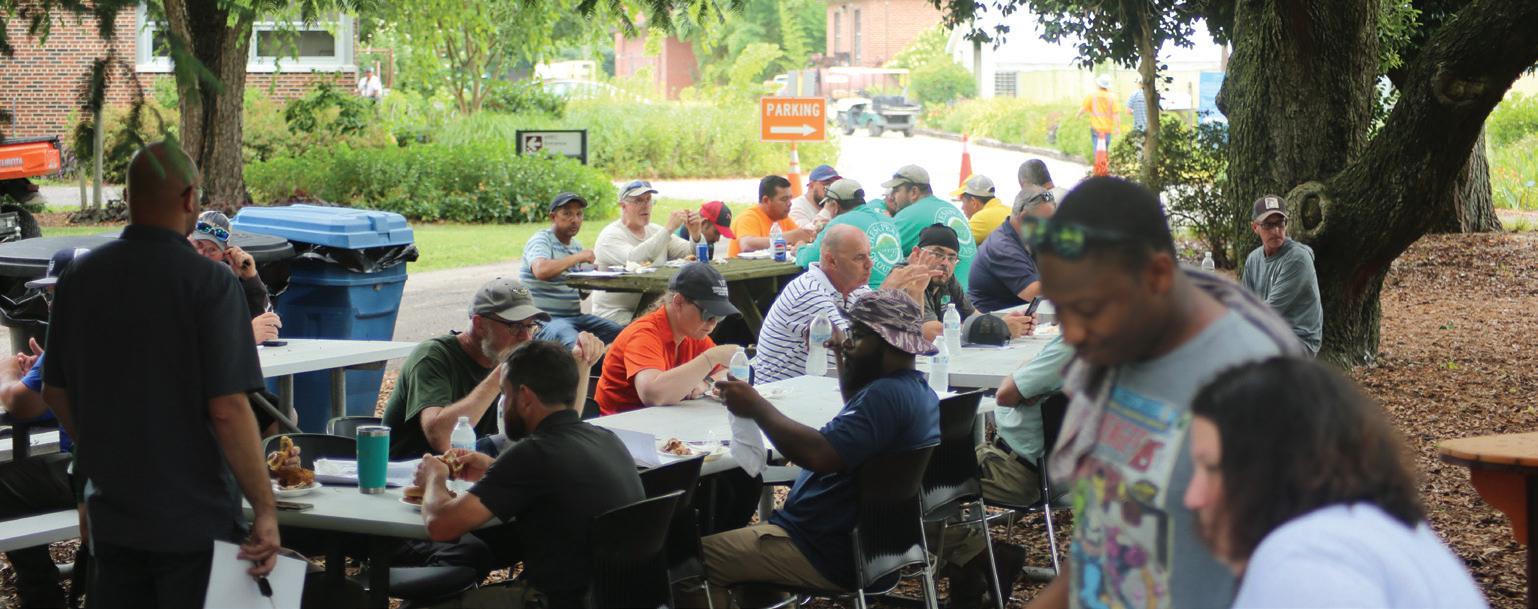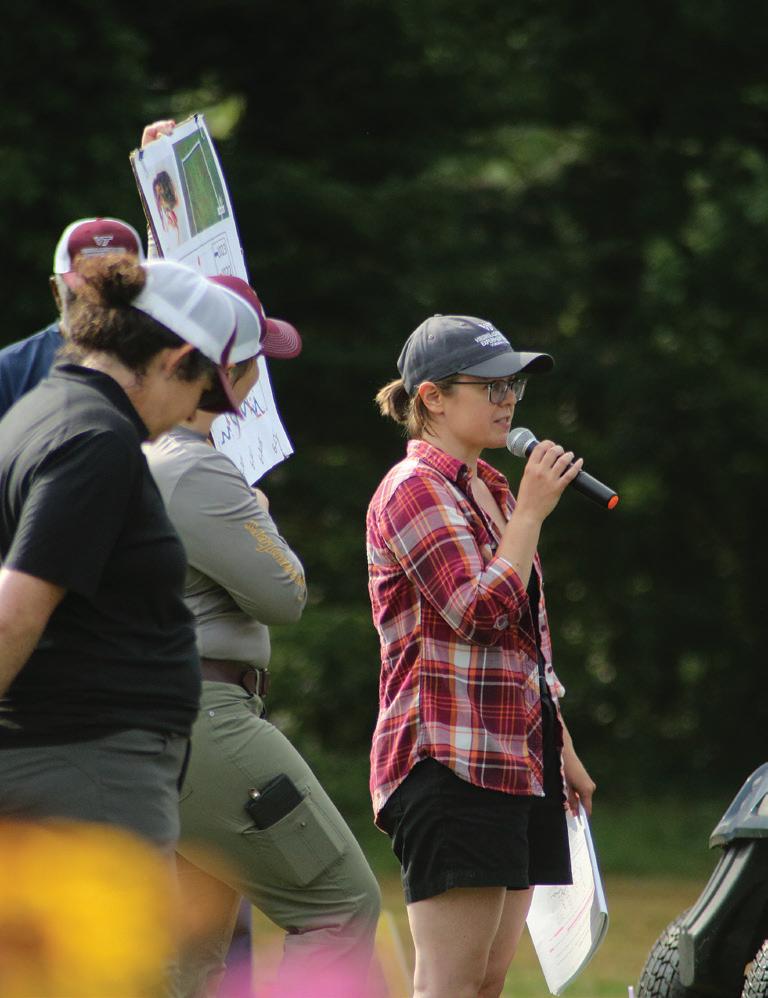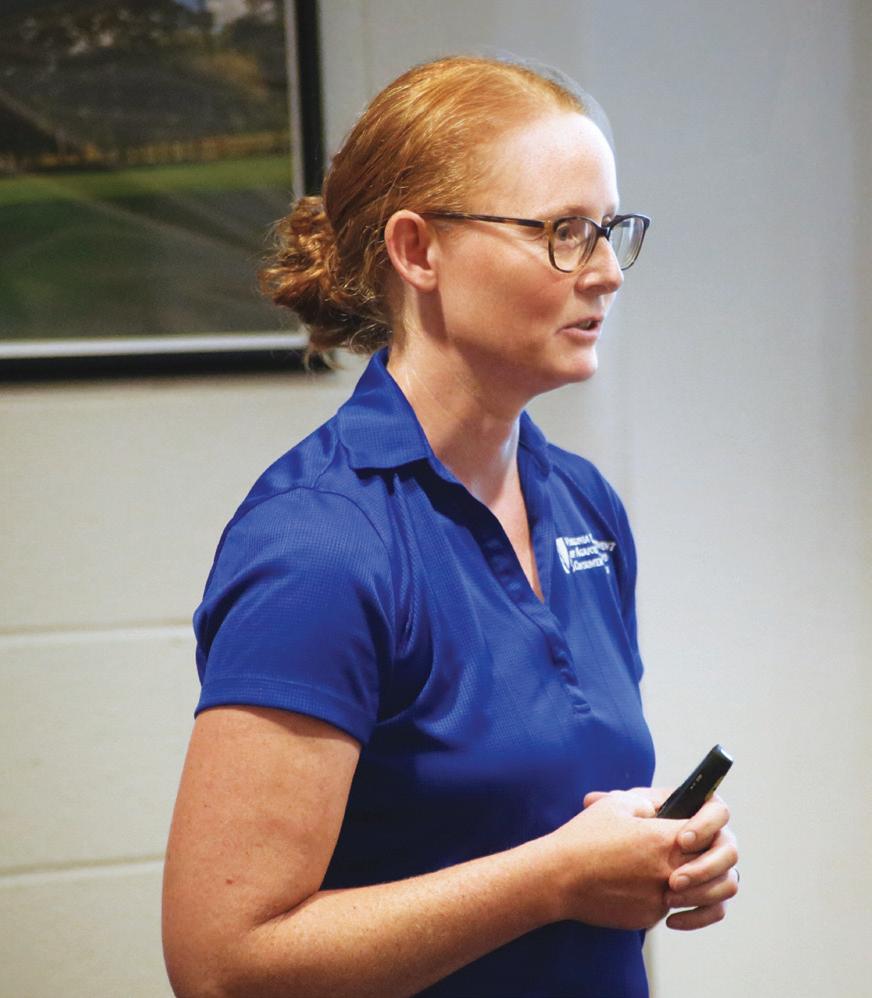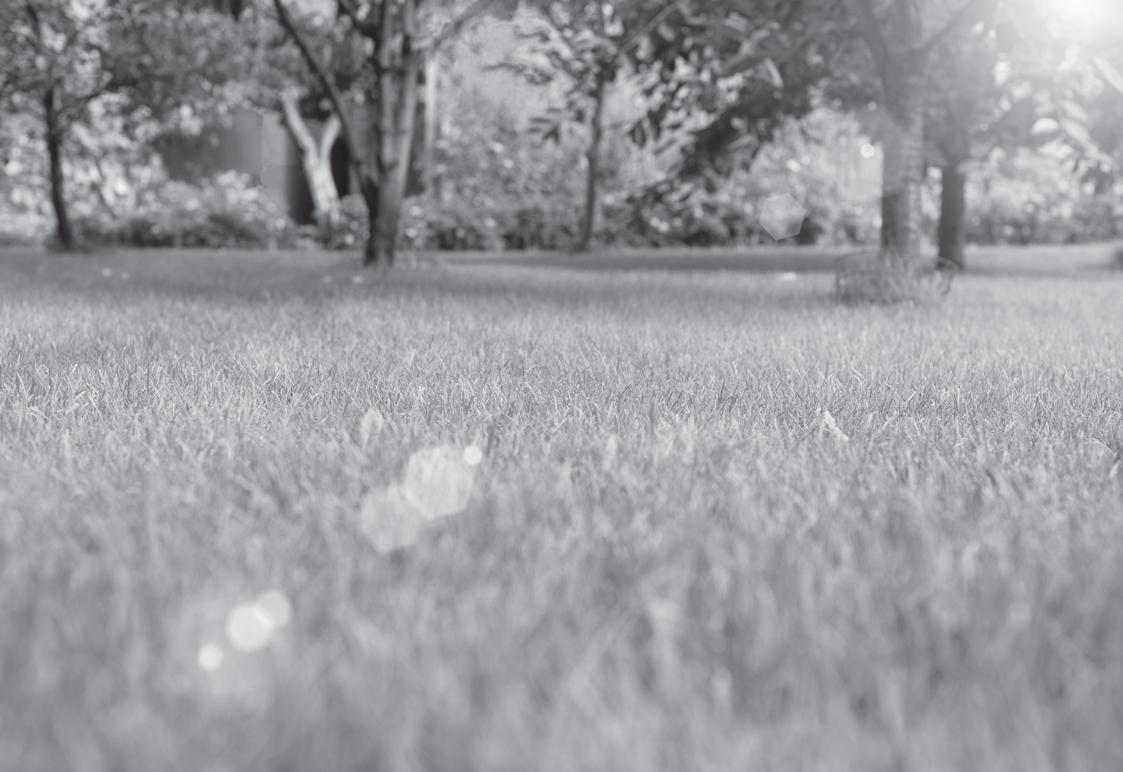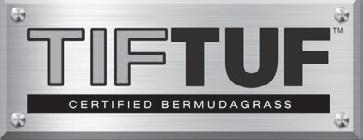
Achieving Sustainability in the Landscape: The Sustainable SITES Initiative
Plus, Applying Science-based Solutions Toward Solving Turfgrass Management Challenges











Plus, Applying Science-based Solutions Toward Solving Turfgrass Management Challenges










Wes Bray VTC President
everal years ago, we realized that perceptions of our industry were not reflecting the positives that VTC members do on a daily basis with regards to protecting the environment. Great minds got together in 2016 to discuss ways to change those perceptions and the idea for the Come to the Bay industry conference was formed.
One focus of Come to the Bay was to educate and train industry persons on everyday actions performed during the course of landscape maintenance and how they have direct effects on water quality and impacts to all of Virginia’s waters. We have been able to show members that simple tasks such as keeping soils and fertilizers off hard surfaces have enormous benefits, especially preventing soil and sediment from eventually entering into the Chesapeake Bay and surrounding waterways.
With most VTC members tasked with more than just maintaining lawns and turf, Come to the Bay also focused on shrub and ornamental care, best management practices, and storm water pond maintenance practices.
Equally important was our willingness to seek input from groups outside the industry that held many of those false industry perceptions to be true. This willingness has become a hallmark of the conference with many of our former foes now helping to plan and implement programing. We invited many who might disagree with our industry to speak at the conferences. The Bee Keepers, Butterfly Societies, River Keeper Associations, the Chesapeake Bay Foundation and others have seen the value of our services. Their involvement contributes to the success of Come to the Bay.
What changed people’s minds? Service projects! When we decided to put our money where our mouth was, former foes realized we had much more in common than many realized. Now, environmental groups ask: “When is the next service project and what can I do to help?”
Last year’s project at the Virginia Aquarium was a tremendous success. We were able to get dozens of area students to design the landscape, grow plants and install plants. Students worked side by side with industry. Together, they planted native vegetation at a demonstration pond and installed coir logs for erosion control. Student involvement has been crucial to the long-term success of our service projects – they will become tomorrow’s leaders.
Come to the Bay 2025 service project will be back at the Chesapeake Bay Foundation’s Brock Environmental Center and Virginia Beach’s Pleasure House Point Park. Two years ago, we renovated a non-functioning Best Management Practice water retention area and installed flowering native plants as a demonstration that BMPs can be an attractive feature. That project has been a great success, generating much good will.
So, what are you doing to help? Service projects success depend on your willingness to volunteer time and provide financial support. I encourage you to look around your communities and be more involved.
Wes Bray VTC President
Virginia Turfgrass Journal is the official publication of
The Virginia Turfgrass Council P.O. Box 5989
Virginia Beach, VA 23471
Office: (757) 464-1004
Fax: (757) 282-2693
vaturf@verizon.net
PUBLISHED BY
Leading Edge Communications, LLC
206 Bridge Street, Suite 200
Franklin, Tennessee 37064 (615) 790-3718
Fax: (615) 794-4524
info@leadingedgecommunications.com
VTC OFFICERS
President
Wes Bray Lawns & Gardens Plus (757) 422-2117
Vice President
Harris Wheeler, CTP (804) 475-4561
Past President
Phil Bailey, CGCS Isle of Wight County Parks & Recreation (757) 572-1981
VTC DIRECTORS
Sam Burris
Jack Findling
Ray Funkhouser
Richard Linsday
Bruce Sheppard
T.J. Skirsky
Craig Zeigler
VTC ADVISORY MEMBERS OF THE BOARD
Mike Goatley, Ph.D. (Chair)
Shawn Askew, Ph.D.
Alejandro Del Pozo-Valdiva, Ph.D.
Jeffrey Derr, Ph.D.
David McCall Ph.D.
Dan Sandor, Ph.D.
Cynthia Smith, Ph.D.
EXECUTIVE DIRECTOR / DIRECTOR OF PROGRAMS
Tom Tracy, Ph.D. (757) 464-1004
VIRGINIA TURFGRASS FOUNDATION
Brandyn Baty (757) 585-3058


ETom Tracy, Ph.D. VTC Executive Director
lected officials can make or break our industry with a stroke of the pen. That power is especially possessed by members of Virginia’s General Assembly and that truth propels our involvement with legislators. We take stands on specific bills and we broadcast the value of our great industry to elected officials throughout the year.
Annually distributing 330 bags of fescue grass seed to senators, delegates, and their aides is one of our major outreaches. “We look forward to your coming,” is frequently heard as we pull our wagons full of seeds through the General Assembly building. The three-pound seed bags were donated by Trinty Turf – that company even custom blended and custom labeled each bag for us.
Three bills that caught our attention during the 2024 General Assembly: HB320, HB528, and HB644.
House Bill 320 allows unlicensed volunteers to apply herbicides on select city and county land throughout the state. While the intent of the legislation, controlling invasive weeds, is admirable and pursues a goal we all endorse, using a technicality to bypass the training, certification, and recertification requirements established by the Environmental Protection Agency and the Virginia Department of Agriculture and Consumer Services is worrisome. We expressed our concern – to no avail. The bill passed the General Assembly and has been signed into law by Governor Youngkin.
The new freedom granted in the regulation is not mandatory – it only allows localities to use volunteers to apply herbicides to control invasives on certain properties. They are not required to do so. Concerns about liability have already prompted several cities and counties to not allow volunteers to apply pesticides.
On a side note, the environmental group that pushed the bill through the General Assembly is on record as saying herbicides are necessary. That truth is rarely heard from persons opposed to pesticides.
House Bill 528 sought to require Home Owner Associations to allow residents to replace lawns with conservation landscapes. We expressed our concerns but the issue addressed by the bill primarily is primarily a property rights one. The bill was carried over to the 2025 Session.
House Bill 644 sought to allow cities and counties to regulate gas-powered leaf blowers. We opposed the bill on two counts: (1) battery powered leaf blowers are not yet adequate for professionals who spend all day clearing hard surfaces (sidewalks, driveways, etc.) and removing wet leaves in the fall; and (2) giving that regulatory ability to localities is problematic for companies that operate across city and county lines. House Bill 644 was continued to the 2025 Session.
What do we expect next year? The HOA and Leaf Blower bills will resurface. Their proponents are gathering support and preparing an aggressive push to get them passed in 2025. We also expect legislative that will allow localities to supersede state pesticide regulations. The latter has us very concerned – it would allow each city and county to dictate what pesticides can be used, where they can be applied, and the times of year (or day) when their use is prohibited.
Our work continues. Your support enables us to keep fighting for you! Please donate to the VTC Environmental Institute. Because we are a 501-c3 corporation, your donations are tax-exempt. To donate, go to https://vaturf.org/donate_ institute to donate online.
Tom Tracy, Ph.D.
VTC Executive Director
Shawn D. Askew, Ph.D. Virginia Tech 435 Old Glade Road Blacksburg, VA 24061 540-231-5807
askew@vt.edu
Alejandro Del Pozo-Valdiva, Ph.D. Virginia Tech
Hampton Roads
Agricultural Research Station 1444 Diamond Springs Rd. Virginia Beach, VA 23455 757-363-3900 adelpozo@vt.edu
Jeffrey F. Derr, Ph.D. Virginia Tech
Hampton Roads
Agricultural Research Station 1444 Diamond Springs Rd. Virginia Beach, VA 23455 757-363-3912 jderr@vt.edu
Mike Goatley Jr., Ph.D. Virginia Tech 420 Smyth Hall Blacksburg, VA 24061 540-231-2951 goatley@vt.edu
David McCall, Ph.D. Virginia Tech 435 Old Glade Road Blacksburg, VA 24061 540-231-9598 dsmccall@vt.edu
Dan Sandor, Ph.D. Virginia Tech
170 Drillfield Dr. 411 Price Hall Blacksburg, VA 24061 540-231-9775 dsandor@vt.edu
WITH SUPPORT FROM:
Thomas P. Kuhar, Ph.D. Virginia Tech Dept. of Entomology
216 Price Hall 170 Drillfield Drive Blacksburg, VA 24061 540-231-6129
tkuhar@vt.edu
Afun fundraising event to generate a little additional revenue for the VT Turfgrass Research Center takes place the afternoon of August 26. Goatley Rules Golf tees off at 3 p.m. on Monday, August 26 at the Virginia Tech Golf Course. What’s GRG all about? Well, it’s golf, but the intent is for the event to be focused on FUN and not your team score. Sure, our contestants are playing for prizes, but mostly they are playing to see if they can execute the shot requirements of a particular hole. Challenges such as “The Happy Gilmore Drive”, the Crap Shot (tee shot off of a toilet), Dr. Askew’s “Mobile Tee Shot” where you have to hit a moving ball... that’s three of our standard entries that always get the most notoriety/frustration from our players. Each hole is staffed by a VT Turfgrass Team member, so you have a chance to meet the Team as well.
Following the GRG at 6:30 p.m., we will have the Annual Happy Hour and Dinner at the Holtzman Alumni Center on the campus of VT. This is a social event to welcome everyone to town, meet and greet with the VT Turf Team and our students, and present the Goatley Rules Golf awards.
Our Research Field Day kicks off on August 27 at the Turfgrass Research Center at 615 Southgate Drive. Registration/check-in, breakfast, and vendor engagement begins at 7 a.m. and the Field Day Tours begin at 9:00. We offer three concurrent tracks (Lawn, Golf and Sports Turf/Sod Production) where you will tour the Turf Center and hear from all the faculty, staff, and students about the latest research being conducted at Virginia Tech. Our research tours will highlight our applied research with the latest in product and variety evaluations, as well as our basic research where we will discuss the work that we think is really going to impact the future through technology. Our concurrent tours run until 1 pm, when we will complete our day with lunch, introductions, and final Q/A.
Our Field Day registration can be found at https://givebutter.com/VT-FieldDay-Blacksburg PhD Candidate Navdeep Godara details pollinator protection strategies in pest management programs.


Shawn Askew details the possibilities of cryogenic weed control using liquid air.
By Michael Ross, SITES AP, ASLA, Assistant Professor, Plant Sciences Department + School of Landscape Architecture, University of Tennessee
and James D. Zimmerman, MLA Graduate Student, School of Landscape Architecture, University of Tennessee
This article was originally published in Tennessee GreenTimes, Winter 2023 and is reprinted with permission.

am often asked about references that are available to help designers, gardeners, contractors, and maintenance folks establish more sustainable practices and solutions to common landscape challenges. There are many great resources that provide some basic strategies for residential landscapes and gardens. Suggestions can assist with retrofit and initiation options as well as sustainable enhancements for designs. Often, though, planners find that as the scale of a project increases, or they are facing construction of a completely new development, the ability to maximize sustainability and resilience in the earliest stages can impose some significant challenges…along with real opportunities.
There are several programs that serve as guidelines for pursuing sustainable design, construction, maintenance, and management objectives. In this article, I will focus on The Sustainable SITES Initiative (now, SITES v2).
The Sustainable SITES initiative was developed in collaboration with the American Society of Landscape Architects, The Lady Bird Johnson Wildflower Center, and the United States Botanic Garden. The developers of the SITES concept sought to promote ecosystem services and regenerative landscapes as an investment in resilient futures and ecosystem services. Ecosystem services encompass the goods and benefits that healthy ecosystems provide to people, both directly and indirectly.
The goal of SITES focused on developing a sustainability rating system that would serve a similar role for the landscape that the Leadership in Energy and Environmental Design (LEED) system provided for buildings. Like LEED, SITES provides a rating system that allows projects to earn points and gain recognition for efforts undertaken to integrate sustainability. Initial efforts were undertaken with pilot projects from various parts of the country and at varied scales.
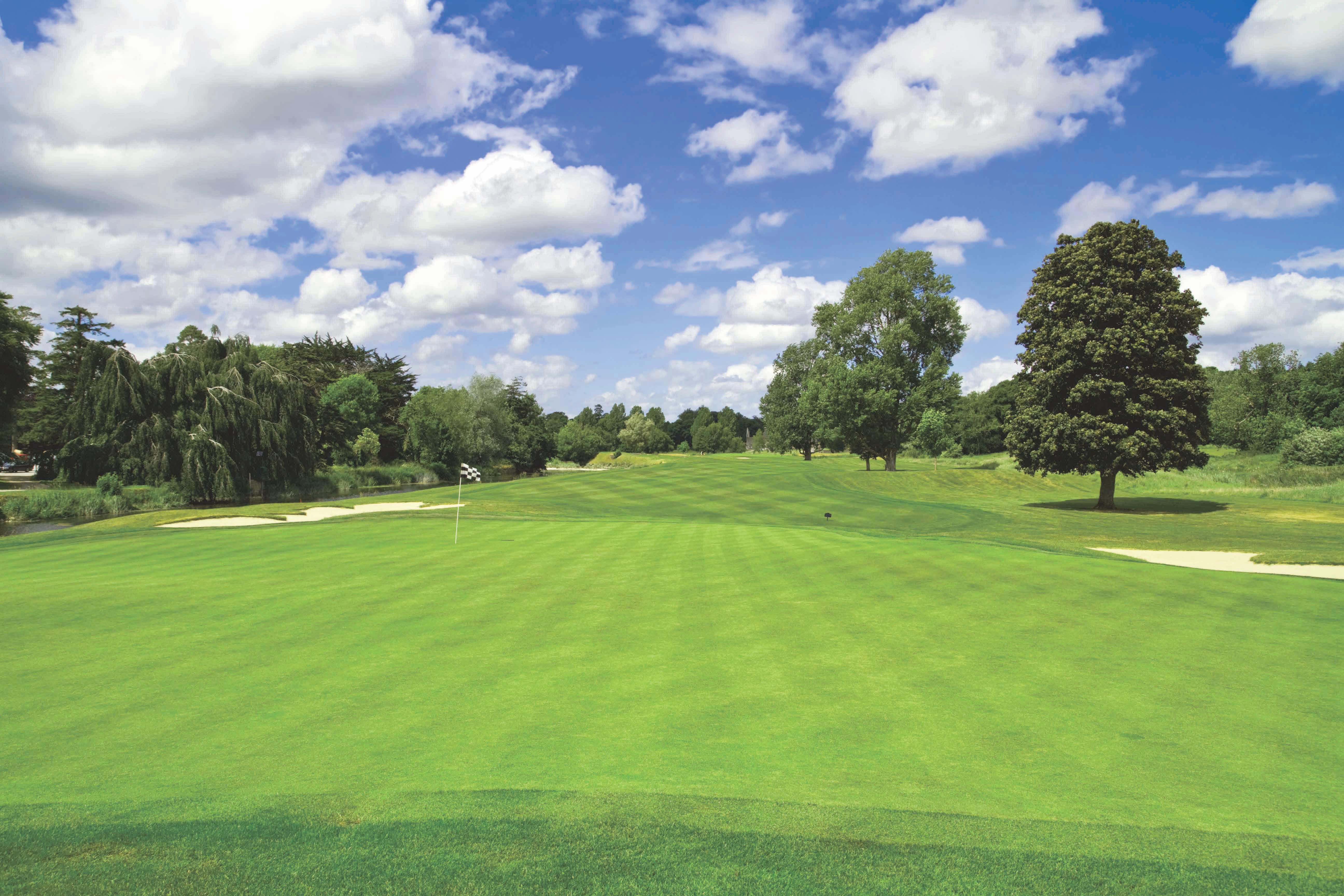
Spectrum is THE choice for golf courses that demand the highest turf quality and greatest resistance against a range of stresses. Developed at Rutgers University, Spectrum leads the next generation of bentgrass varieties in Dollar Spot resistance, early spring green up, traffic and wear tolerance in addition to overall turf quality.
Optimal shoot density, pleasing bright green color and an upright growth habit make Spectrum the perfect choice.
UNCOMPROMISING
541.248.3087 | LANDMARKSEED.COM
As feedback came in from participating professionals, credits were added, refined, and clarified. The Sustainable SITES Initiative is now on its second version and is referred to as SITESv2. The enhanced objectives of SITESv2 are to create regenerative systems and foster resiliency, to ensure future resource supply and mitigate climate change, to transform the market through design, development, and maintenance practices, and to enhance human well-being and strengthen community (SITES v2 Reference Guide, 2014). These lofty goals reflect a contemporary understanding and appreciation for the simple fact that landscape is inherently boundless. Although we as designers and planners may be limited to a project site boundary, the decisions, actions, and interventions we take will have impacts beyond the project site.
SITESv2 recognizes four categorical levels that are achieved through meeting prerequisites and achieving point credit accumulations: Certified (70 pts.), Silver (85 pts.), Gold (100 pts.), and Platinum (135 pts.) projects. SITESv2 currently has a total of 200 credits (points) that can be earned. Although a project does not need to earn all possible credits, it must satisfy all the required prerequisites. SITES and SITESv2 are now owned and managed by Green Business Certification Inc. (GBCI), the same company that owns and manages LEED certification. There are now synergies between the two rating systems that allow for credits earned in one to be applied to the other.
At the time of writing, there are more than 290 projects that have been categorized within the Sustainable SITES Initiative. These projects run the gambit from efforts initiated at university campuses (Photo 1), city parks (Photo 2), public gardens (Photo 3), medical facilities, and stormwater mitigation by municipalities. Residential projects also are eligible and could provide some interesting opportunities for expansion of the program. For reference, Tennessee currently has one SITESv2 project, The Woodland Discovery Playground at Shelby Farms, which is located in Shelby County in West Tennessee (Photos 4 & 5).


(image reprinted with permission: photo © James Corner Field Operations)

(image
Park

7,178 2023
Visits on The Turf Zone website in 2023 !
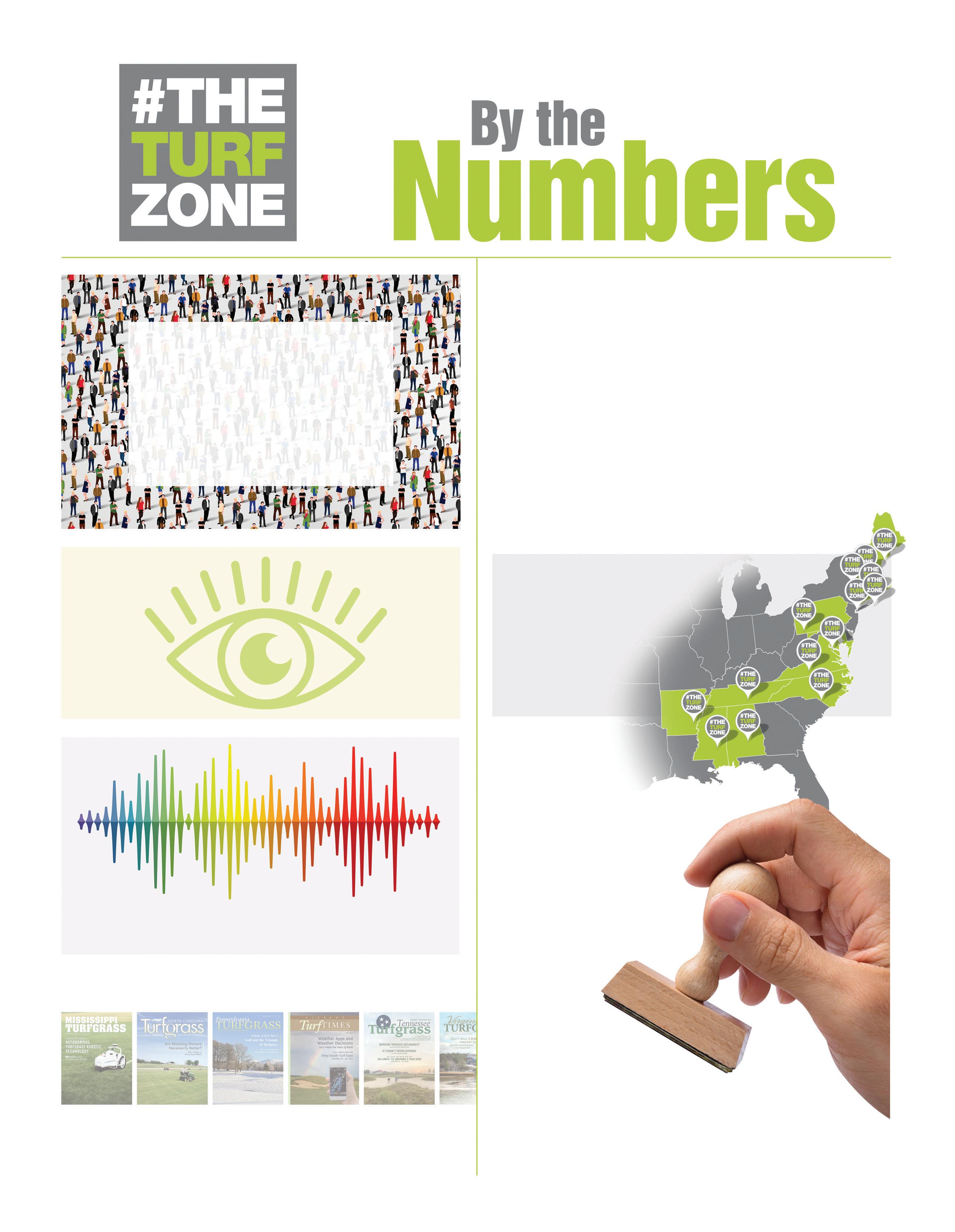
13.29k
Page visits on The Turf Zone website in 2023 !
105
Podcasts produced in 2023 featuring timely topics for those on the go!
41
4 Million
Social Media Impressions in 2023 !
14
State coverage east of the Mississippi !
136,159
Digital Publication Impressions in 2023 !
23,307
Total Digital Publication Reads
The process to SITESv2 Certification is organized into four steps. First, the site must be registered by completing key forms and paying the registration fee to receive access to SITESv2 worksheets. Then, completion and submission of the necessary worksheets and documentation enable GBCI to begin reviewing the project. Thirdly, GBCI will conduct an examination of the project to ensure credibility. Finally, if everything is approved, GBCI completes the final review and awards certification.
Currently the SITESv2 program is broken down into 10 sections with required prerequisites and optional credits. These sections include elements like using an integrative design process and conducting a pre-design site assessment as prerequisites, while reducing outdoor energy consumption and diverting construction and demolition materials from disposal as non-required credits. It is important to note that not all projects will have the ability to hit all the credits, but projects must achieve all the prerequisites.
Additionally, SITESv2 uses a decision-making hierarchy that focuses on conservation, management, restoration, and generation depending on the initial site conditions. As examples, if your project location had an old growth forest, a designer might prioritize conservation as a key strategy. If, however, the location was formerly a parking lot, the designer would utilize a strategy of reintroducing ecosystem services and regenerative systems. These considerations fall within a series of goals for the SITESv2 project.
There are 10 sections of the SITESv2, each with their own prerequisites and available credits. For example, Section 1 deals with site context and focuses prerequisites on minimizing impact to farmland, floodplains, aquatic ecosystems and endangered or
Andropogon Associates. (n.d.-a). Phipps Conservatory and Botanical Gardens. Andropogon. https://www.andropogon.com/project/ phipps-conservatory-and-botanical-gardens
Andropogon Associates. (n.d.). Shoemaker Green. Andropogon. https://www.andropogon.com/project/shoemaker-green/
threatened species. Credits can be earned for redeveloping degraded sites, or infill projects.
Section 2 involves the pre-design assessments and requires the use of an integrated design process. This is perhaps one of the strongest arguments for the SITESv2 program. The integrated design process requires that all participants, owner, designers, contractors, and maintenance folks be present and actively engaged in the initial discussions and design planning. Many of us have experienced situations where our voice is left out of the design and planning process only to be brought in after the fact and in some cases too late to effectively guide a sustainable or resilient move on a project. This integration between participants means that everyone is acknowledged as being crucial to the successful outcome of a sustainable project.
Section 3 deals with site design as it relates to water. This includes reducing water use for irrigation, managing stormwater on site, restoring aquatic ecosystems, etc. As with all the sections there are credits that can be earned by using sustainable design best practices.
The remaining seven sections relate to Soil and Vegetation, Material Selection, Human Health and Well-Being, Construction, Operations and Maintenance, Education and Performance Monitoring, and Innovation Exemplary Performance.
There are several challenges that arise when working towards SITES Certification. One of the main challenges is the cost of the SITES Certification with registration and certification fees can approach $10,000. Keeping track of forms, deadlines, and credits also is time consuming and can take away time from the project itself. This extra time reduces the effort and money that can be put into designing the site. Another challenge is trying to assemble the integrated design team. This requires a variety of stakeholders to agree to joining the team and can take time and communication to form an effective team.
James Corner Field Operations. (n.d.). Shelby Farms Park. Field Operations – project_details. https://www.fieldoperations.net/project-details/ project/shelby-farms-park.html
Sasaki. (2023). Xuhui Runway Park. Sasaki. https://www.sasaki.com/projects/xuhui-runway-park
The Sustainable SITES Initiative. (2014). Sites V2 reference guide: For sustainable land design and development. Sustainable Sites Initiative.

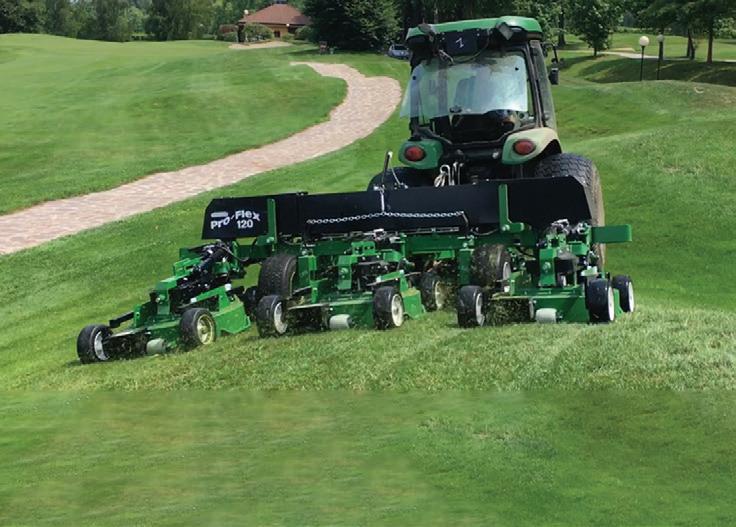

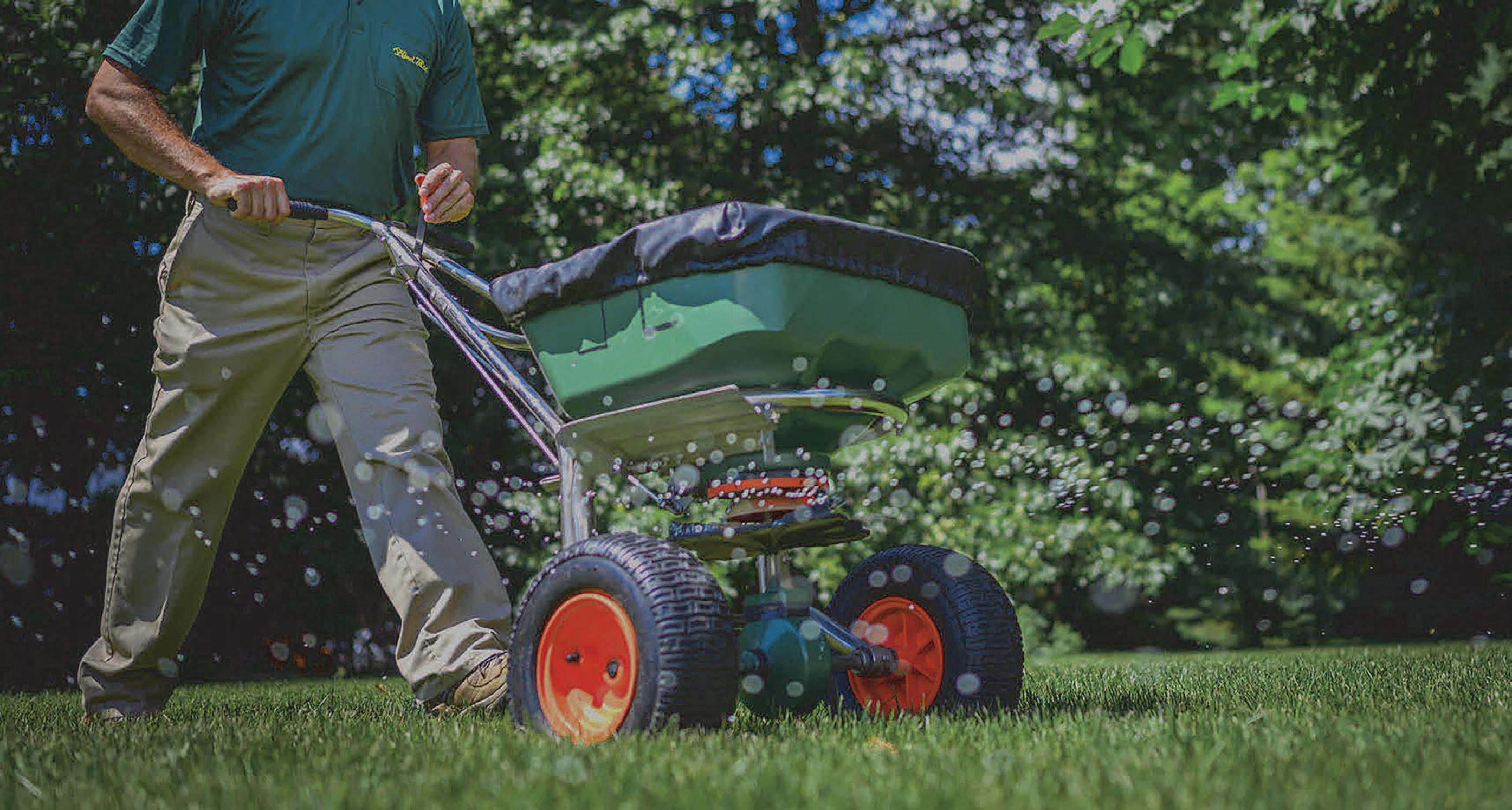

By Rhys Fielder, MS student, Tyler Carr, Ph.D., John Sorochan, Ph.D., and Kyley Dickson, Ph.D.; Plant Sciences’ Turfgrass Science Program at the University of Tennessee – Knoxville
Modern-day stadiums are often planned and designed to provide versatile functionality and enhance fan experience. These stadiums are usually promoted as the home of a particular sports team; however, these venues may also become host sites for events year-round that range from concerts to monster truck rallies. Currently, ten of the thirty National Football League (NFL) and eight of the thirty Major League Baseball stadiums are either fully enclosed or have large overhangs covering the seating bowl. The encapsulation of the stadium allows for an increase of fan comfort during events, as well as a reduction or removal of environmental factors when planning or hosting events. While these amenities are important for professional venues, any stadium or pitch that receives heavy shade from high walls, overhangs, or partially enclosed roofs, present difficulties to those managing one of the most important assets a stadium has: the playing surface.
We learn and teach these and other practical challenges in undergraduate and graduate level Turfgrass Sciences coursework in the Plant Sciences degree programs at the University of Tennessee. For some undergraduate student interns, as well as MS and PhD students working on cutting-edge research projects to address a knowledge gap, the solution requires understanding the science of interactions between turfgrasses and structures, the players on the field, and the turfgrass managers who are tasked to maintain the highest quality playing surface across the entire span of seasonal use. This understanding is most often informed by our studies of plant physiology, growth, and performance characteristics of different turfgrass species.
In the real-world scenario that we present here, shaded turfgrasses in stadiums experience considerable challenges to photosynthetic processes that would not typically inhibit plant development in an open-air environment. Unlike humans, plants have the remarkable ability to generate their own food through the process of photosynthesis. A combination of water, carbon dioxide, and light energy allows the plant to manufacture carbohydrates to be used for energy. These three ingredients can be naturally provided by the environment. Within a stadium environment, irrigation can be used to fulfill water needs and air circulation systems such as fans can even be supplemented to increase carbon dioxide availability. However, one of the most difficult challenges a stadium or partially enclosed structure creates is the imposition of shade that reduces the amount of available light.


Shade can be defined as a reduction in both light quality and light quantity. Light quality is explained by observing the wavelengths in light, which are measured in nanometers (nm) and range from very short to very long. Turfgrass requires light quality to be within the range of 380–700 nm in order for photosynthesis to occur. Light quantity is the actual particles of light that provide the necessary energy for photosynthesis to occur. A shade situation appears when there is not enough light energy (quantity) being supplied to the turfgrass for sufficient photosynthesis to occur.
In many instances, the simple answer has been to install artificial turf surfaces that do not require light at all. Yet simple solutions can bring challenges and consequences of their own. The decision to switch to artificial turf is often made contrary to player preference and injury data. Results from the NFL Players Association’s (NFLPA) 2010 NFL Players Playing Surfaces Opinion Study documented that 69.4% of players preferred to play on natural grass
versus preference for artificial turf (14.3%). More recently the NFLPA president, JC Tretter, released a statement that calls for all NFL stadiums to have natural grass playing surfaces. Tretter cited NFL injury data collected from 2012 to 2018, which reported that artificial surfaces increased the likelihood of a player suffering a non-contact lower extremity injury by 28% compared to grass. Faced with calls for action and preferences of players, stadiums that have extreme shade issues and boast artificial surfaces are forced to consider the difficult questions: Is it possible for our venue to support natural grass? and How can that turfgrass be managed for playability across event activity and growing seasons?
Answers to parts of those questions can be supported with solutions from supplemental lighting. Supplemental lighting for stadiums is like the lights used in a greenhouse. They work by replacing the photosynthetically active light that a plant would usually obtain from natural sunlight. Supplemental lighting products for stadiums generally rely on illumination from one of two different light sources: high pressure sodium (HPS) or light-emitting diode (LED) (Figure 1). Currently, the most widely used supplemental lighting systems in the United States and worldwide utilize HPS rigs.
Stadiums housing NFL teams in Miami, Jacksonville, Green Bay, and Kansas City have had success using HPS light systems to promote photosynthesis on areas experiencing shade issues. Colder climates, such as in Green Bay, receive added benefits from HPS lights, as these systems can increase temperatures at the grass surface up to 5°F (3°C). Green Bay routinely reports daily low temperatures below freezing between November and January, so the heat emitted from the HPS lights likely allows the grass to recover between games when there would otherwise be little to no recuperative growth, potentially resulting in a safer surface for the athletes. If excess heat from supplemental lighting is not desired, such as a stadium in a hot climate, one may elect to use LED lights.
LED light systems provide two distinct benefits compared with HPS. First, LED lighting uses less energy during operation than HPS systems. The principle is similar to replacing incandescent bulbs with energy-efficient LED bulbs in residential and commercial buildings. Another benefit of LED systems is the ability of operators to select a desired range of wavelengths from different portions of the light spectrum. This capability is not available with HPS lighting. Although LED systems are currently more expensive up-front than HPS, the gap in cost has been narrowing with advances in technology.
Since summer 2019, The University of Tennessee has been conducting supplemental light studies in cooperation with Stadium Grow Lighting to quantify how warm- and cool-season turfgrass species respond when grown under light supplied from only LED or HPS systems (Figure 2). These are important questions to answer, as indoor stadiums create situations where all light must be supplied supplementally.
An important way to measure how a cool-season grass, such as Kentucky bluegrass, responds to supplemental lighting is to quantify the turfgrass quality. A subjective way to assess quality is by estimating the percentage of green turfgrass coverage over a given area. In general, greater turfgrass coverage corresponds to greater aesthetic quality.
Throughout the trial, our team identified no significant differences in green turfgrass coverage when comparing HPS and LED in the absence of natural light (Figure 3). Kentucky bluegrass maintained turfgrass coverage greater than 90% when grown
under both HPS and LED lights. In addition, turfgrass coverage greater than 95% was observed continuously for the first 24 days.
So how could it be possible for an indoor or heavily-shaded stadium to grow natural grass? Our preliminary results with Kentucky bluegrass show that this species can be grown using supplemental lighting when no natural sunlight is available, like in an indoor stadium. The ability of a turfgrass manager to effectively grow natural grass in a stadium while continuing to host external events will only increase the capability of the venue to generate revenue throughout the year. Current and future research at the University of Tennessee is underway and being planned that will provide innovative solutions to other problems associated with growing turfgrass in situations that require solutions for shade and supplemental lighting.
This article was originally published in Tennessee GreenTimes, Winter 2023 and is reprinted with permission.


Figure 3. Green turfgrass coverage for Kentucky bluegrass grown exclusively under high-pressure sodium (HPS) or light-emitting diode (LED) supplemental lighting systems from November 8 to December 11, 2019 in Knoxville, TN. Images demonstrate the response of Kentucky bluegrass to HPS (top row) or LED (bottom row) after 0, 14, and 24 days.
By Max Schlossberg, Ph.D. & Nathan Leiby M.S. (PSU AGRO ’21)
Unless noted, photo credits M.J. Schlossberg. No more than zero artificial intelligence resources participated in the composition of the following article.
This article was originally published in Pennsylvania Turfgrass, Summer 2024 and is reprinted with permission.

phthalocyanine (C32H16CuN8,), also known as viridian hue, pigment green 7, and phthalocyanine green G; is a brilliant green synthetic pigment utilized in numerous artistic and industrial applications. Like many popular dyes/pigments, phthalocyanine green G is both immiscible (water-fast) and recalcitrant (durable). It is a sizable pyrrole-benzene organometallic too (Fig. 1), with a molar mass just a fuzz over 576 grams. You’ve most recently seen it in auto paint or tattoo ink but were probably first introduced while mixing ‘Fore!’ fungicide back in the 20th Century.
To our PTC members operating in the southern hemisphere, Cu phthalocyanine is the pigment responsible for the verdant hue of the warm season turfgrass you just treated with dormancy colorant. For residents of the Commonwealth who utilize a spray pattern indicator with ‘Green’ in its name, Cu II phthalocyanine is likely the ingredient indicating where your last pass starts and ends. We included the ‘likely’ qualifier because some colorant products that appear green contain blue and yellow pigment combinations, rather than Cu phthalocyanine.
Considering regional interest, editorial constraints, and our research experience, we will limit discussion of Cu phthalocyanine to spray indicator and combination products applied to actively growing turfgrass systems in season. Readers seeking guidance on dormancy colorants or paint are encouraged to consult the useful and current ‘Guide to Using Turf Colorants’ by Dr. Grady Miller and Drew Pinnix of NC State Extension (https://content.ces.ncsu.edu/ guide-to-using-turf-colorants).
Owing to its low mammalian toxicity and environmental risk, Civitas Pre-M1xed Turf Defense™ (Intelligro, Mississauga, ON, Canada) comprises a popular and widely-available petroleum-derived spray oil (PDSO) plus Cu II phthalocyanine liquid product for inclusion in tank mixes as an indicator dye and/or product synergist. The impetus for the latter includes reports of reduced pesticide requirements when employing Civitas in IPM programs, and recognized benefits of Cu phthalocyanine and pesticide combinations. Civitas Pre-M1xed ain’t your mom’s ‘Oh Happy Plant Bath;’ as it features proven insecticidal properties, a fungicide resistance action committee (FRAC) classification of “not,” and an Organic Materials Review Institute certification permitting employ in organic production/management or where cosmetic pesticide use is prohibited.

TACKLE ANY TASK
The battery-powered KMA 135 R KombiMotor has 15 optional attachments, making it the ultimate piece of outdoor power equipment.

Application of PDSO + Cu phthalocyanine products results in a coating of the plant canopy, to which leaf chlorosis has been attributed. This response has been correlated to reduced photosynthetic capacity arising from the inhibition of gas exchange. In the second year of continual treatment, repeated 17.3 fl. oz. per 1000 ft2 (M) applications of PDSO or PDSO–colorant combination product to maintained putting greens reduced creeping bentgrass canopy quality, chlorophyll content, carbon dioxide exchange and transpiration rates. Semimonthly application of Civitas Pre-M1xed Turf Defense™ (8.5 fl. oz. per M) to an annual bluegrass putting green in Oregon from Sept. to June significantly reduced canopy density on plots subjected to double-rolling treatment five days a week.
However, studies describing ethephon-complementing, one-time, 17 fl. oz. per M application of Civitas to putting greens cohabited by creeping bentgrass and annual bluegrass proved synergistic in suppressing seedheads and did not incite a phytotoxic response. The current Civitas Turf Defense PreM1xed label (revised Nov. 2017) recommends an application rate between 8.5 and 17.3 fl. oz. per M, made on no less than 7-d intervals, either alone or in combination with routine tank mix ingredients.
Although not uncommon practice of golf course superintendents, little research has evaluated urea-N and PDSO–colorant combination products when foliar-fertilizing cool-season turfgrass systems. In 2015, a colonial bentgrass fairway study was conducted by Gary Nolan & Dr. Wakar Uddin at the Valentine Turfgrass Research Center. End-of-season leaf clippings were collected and analyzed for N concentration, and those originating
from plots repeatedly treated by Civitas Turf Defense Pre-M1xed (8.5 oz. per M) showed significantly greater tissue N than untreated plots.
Once apprised of these results, we turfgrass nutrition researchers sought to uncover the how and the why. Foliar application of liquid N fertilizer is a popular approach to ensuring golf course turfgrass nutritional sufficiency in season. For turfgrass managers using primarily urea-N fertilizer, the N loss pathway of concern is ammonia (NH3) volatilization. As much as 11% of 0.4 lbs per M foliar urea-N applications to a golf course putting green were volatilized as NH3 within 24 h. More recent field evaluations showed between 3 and 8% of 0.15 to 0.2 lbs urea-N per M foliar applications were lost in the 24 h following golf course putting green treatment. Considering coating of the plant canopy by PDSO + Cu phthalocyanine is the mechanism by which reduced carbon dioxide exchange and transpiration rate is often attributed, the authors hypothesized Civitas inclusion may influence NH3 diffusion (volatilization) in the 0- to 48-hours following foliar fertilization of golf course fairways by urea-based N fertilizers.
Complementing semimonthly soluble N applications with 8.5 fl. oz. Civitas Pre-M1xed per M of creeping bentgrass fairways (in 1.5 gal./M carrier volume) didn’t affect 0- to 48-hour NH3 volatilization loss (Fig. 2) but significantly improved the mean fairway canopy dark green color index. Which in turn, raised some questions like ‘How?’ and ‘Why?’ and ‘What is the fate of these combination products?’ The open-access (free) paper describing all specific aspects of our fairway research is available at http://www.mdpi.com/2076-3298/10/10/176.

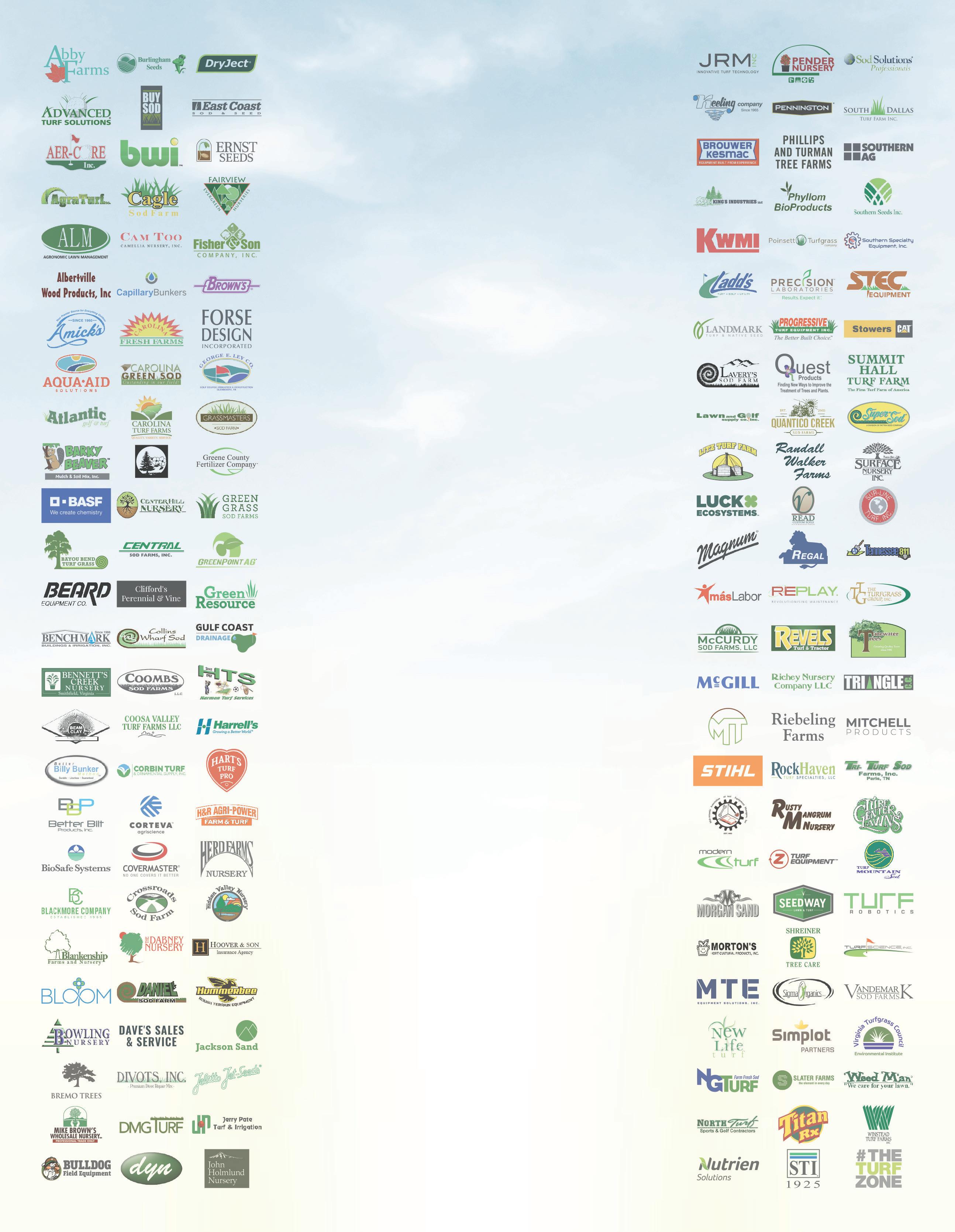

The companies that developed and introduced Civitas, PetroCanada and Intelligro, have proven committed and steadfast in their support of university research. Yet there remains little insight into how the spray oil and Cu phthalocyanine components interact with the living turfgrass canopy over time from application and what their ultimate fates are. These same questions arose in the co-author’s thesis research on putting greens (Fig. 3): Is all Civitas applied absorbed, or bound to vegetation? How does carrier volume affect Civitas distribution throughout the canopy?
And perhaps the most poignant of questions: Could phthalocyanine green absorption by plant tissue cause the darker green color and greater vigor observed of the treated plots? While support for this potential mechanism exists, readers may not consider its origin objectively neutral. But we’re not implicating ‘X’ or ‘Meta’ or whatever the leading, zero-cost source of ‘opinions that fascinate’ currently is. Rather, a national company’s online technical data sheet that claims their unique pigment additive ‘stimulates the plant’s natural metabolism and can improve turf color, density, vigor, consistency and strength, from the inside out. Unlike dyes and paints, this unique pigment additive is absorbed into the plant for longer lasting affects (sic).’
Regarding our 2019 – 20 research, analysis of the fairway clipping yield (shoot growth) data identified significant spray treatment effects. Specifically, in the second half of the 2019 and 2020 growing seasons, the top statistical grouping for mean
clipping yield consisted of all Civitas-containing treatments. This was curious, but like the above technical data sheet claims, not readily refutable — since the literature lacked reports on the mass Cu phthalocyanine and/or spray oil expected to remain on turfgrass canopies by time from spray treatment.
As a proxy, mass retention of an 8.5 oz. per M Civitas PreM1xed Turf Defense application to dry clippings within a polystyrene tray was measured <1 and 1440 minutes following spray application. Approximately 1.2% of the initially applied spray remained as dry solids on the leaf tissue one day (1440 minutes) following. Considering the 0.86 g/mL specific gravity of Civitas Pre-M1xed, and confirming the water component of the spray evaporated (per negative controls), the data indicate 0.006 lbs of solid Civitas residue would be expected to remain on 1000 ft2 of canopy one day following the described spray treatment. This mass was significantly less than the observed difference between clipping yields collected from Civitas- vs. un-treated plots in the second half of either growing season.
A national company (different from the one quoted above) markets its premium pigment additive with claims ‘it provides natural green turf color for up to one month and reflects

potentially harmful near infrared (NIR) light, which may improve turfgrass quality and vigor.’ Getting back to our 2019–20 research, we definitely observed improved turfgrass color and vigor of Civitas-treated plots. But the frequently collected fairway canopy reflectance data showed Civitas treatment reflected significantly less NIR (760- or 810-nm) than equally Nfertilized or untreated bentgrass over several 10-d post-application periods.
So how else could Cu phthalocyanine foster increased canopy color and shoot growth? The product label of a different (third) national company claims it is an advanced colorant formulation that resists the harsh effects associated with long periods of high temperature and intense UV light exposure. Now this follows results of research published in 2004 describing treatment, UV-B (290320 nm) exposure, and assessment of Kentucky bluegrass sod health. However, a suite of greenhouse and field research conducted on various turfgrass systems in Virginia from 2014–15 evaluated low rates of Civitas Pre-M1xed and two other commercial Cu phthalocyanine spray pattern indicators. Canopy spectroradiometer readings collected 1 day after treatment showed significantly less reflection of UV-A radiation (320–400 nm) than from untreated plots.
So perhaps, but how else? Well you’ve surely noticed the only phthalocyanine green containing product we’ve mentioned by name is Civitas Pre-M1xed. This seemed prudent given Civitas is the only phthalocyanine green containing product our lab has evaluated at The Pennsylvania State University since 2018. Again, Civitas Pre-M1xed didn’t affect NH3 volatilization in the two days following application at an 8.5 fl. oz. per M rate ….but did foster increased mean canopy color and shoot growth in the second half of each study year. This may be an occasion when evaluation of additional data helps us link cause to effect, i.e., N content of clipping yields and fertilizer N recovery (FNR).
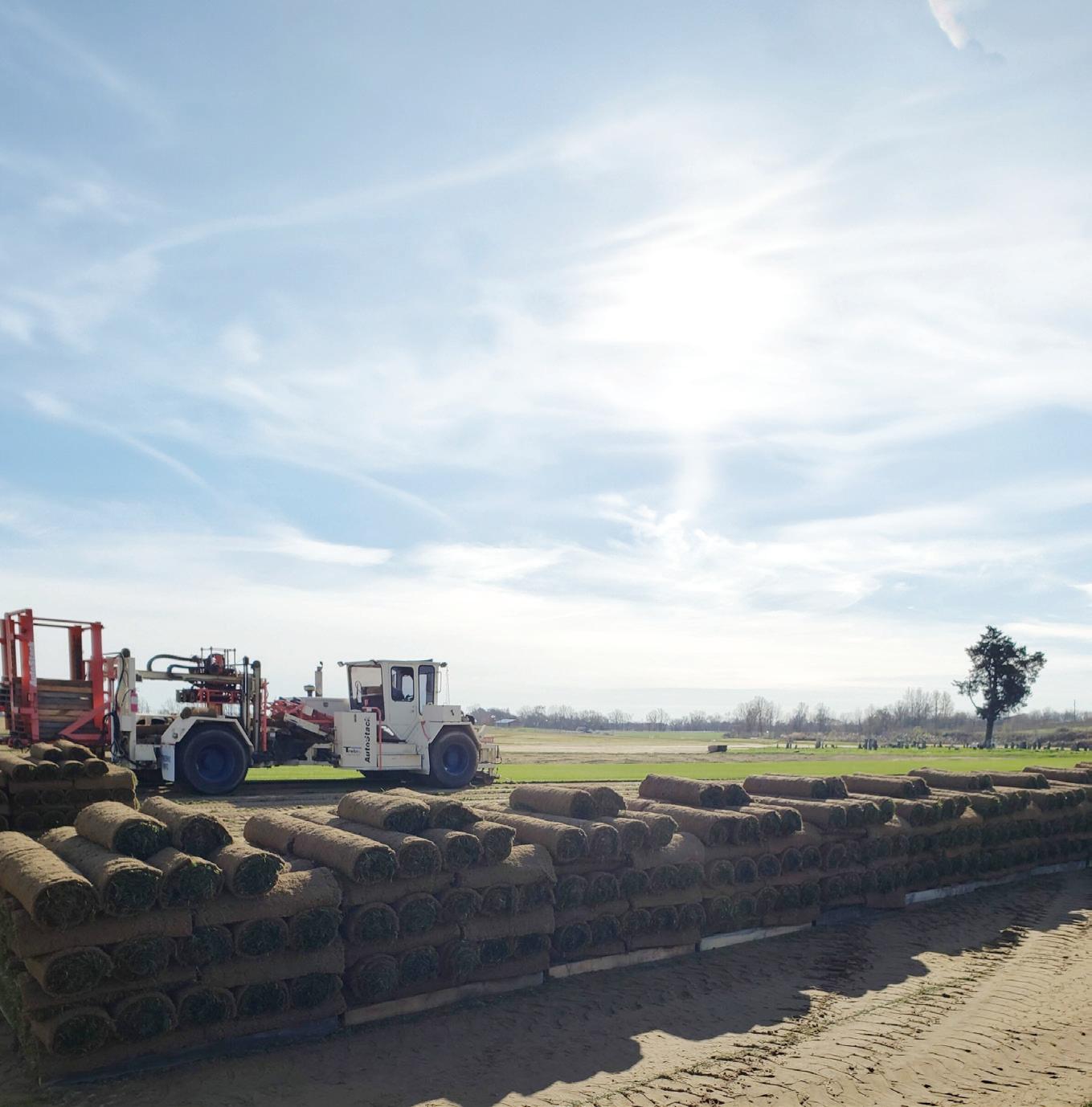

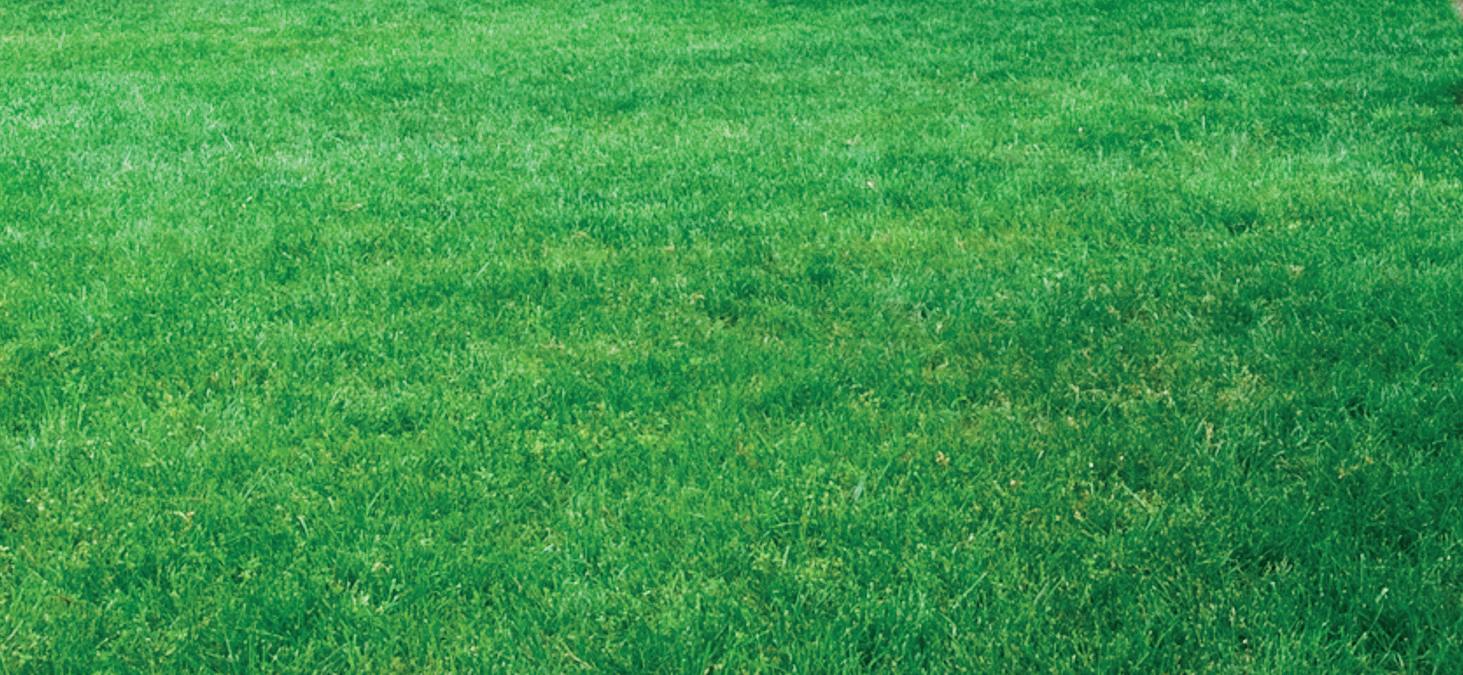

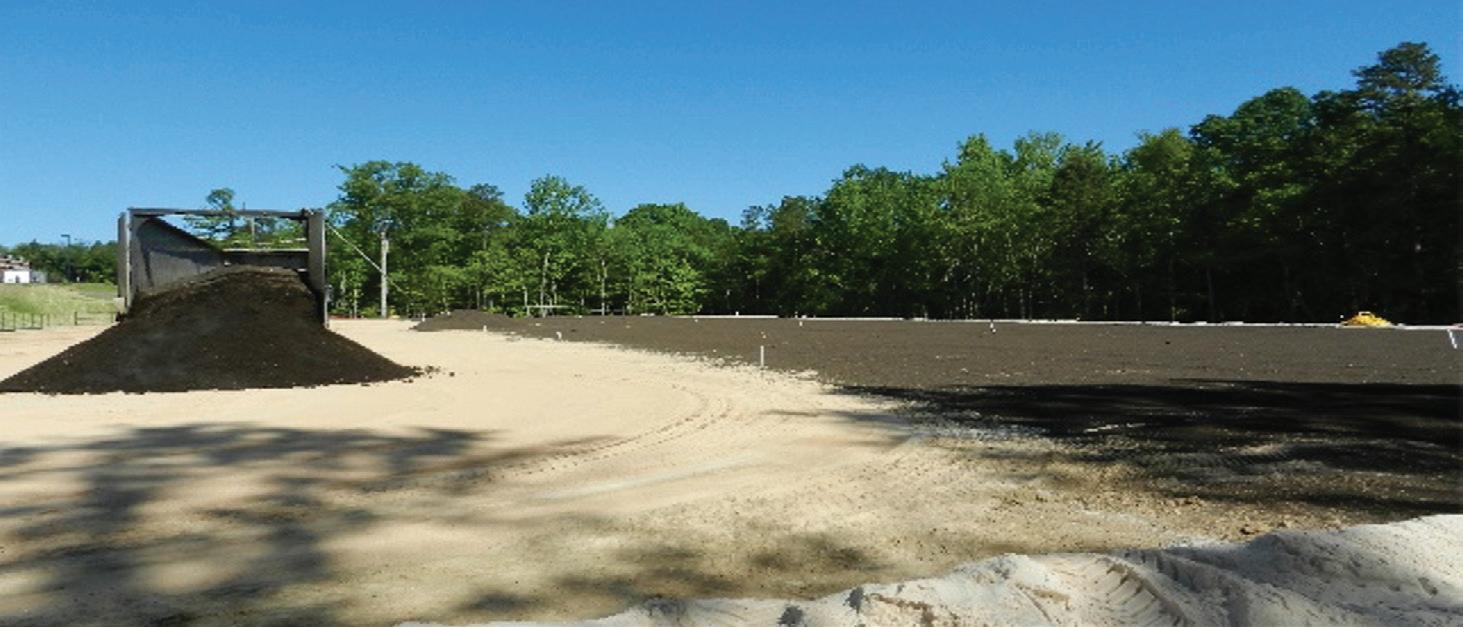

Nitrogen analysis of homogenous Civitas Pre-M1xed reveals a mean N concentration of 1.0%. Considering healthy bentgrass leaf clippings collected from our Declaration fairway ranged from 3.27 to 5.99% N by mass, any of the 0.006 lbs Civitas residue we determined to remain in 1000 ft2 of canopy, one day following application, would be more likely to dilute leaf N content than increase it. Yet, on average, clippings collected from Civitas and N fertilizer-treated plots contained 0.22% greater absolute leaf N than plots treated by N-fertilizer alone. Thus, while systematic complementation of foliar N fertilizer by Civitas Pre-M1xed did not directly influence volatilization loss, cumulative reapplications somehow enhanced N availability.
The origin of the 1.0% N in Civitas is primarily the Cu II phthalocyanine pigment (C32H16CuN8). Having a reference 19.5% N content, this organic N is neither immediately assimilable by plants nor disclosed on the label. However, the estimated N load from Cu II phthalocyanine delivered in each 8.5 fl. oz. application of Civitas Pre-M1xed equals 0.005 lbs N per M. In the last five of the six yield collections, Civitas complementation enhanced fertilizer N recovery (FNR) by a margin exceeding the Civitas N load delivered in the most recent application. However, only in the last two yield collections did Civitas complementation enhance FNR by a margin exceeding the sum of the most recent Civitas N load and the calculated least significant difference (LSD 5%). Meanwhile, cumulative Civitas N load by the end of the 2020 season totaled nearly 0.1 lbs N per M, only 3.3% of the total fertilizer N applied over both growing seasons.
So where does that leave us…in simple terms? Our data indicate Civitas applied to turfgrass isn’t entirely removed with clippings. Rather, irrigation/rain, traversing equipment, foot traffic, canopy maturation, and mowing ultimately translocate a significant fraction of Civitas applications to the underlying soil/rootzone. The Cu phthalocyanine component (pigment) of Civitas, or any containing colorant product, is a big organic molecule with a C:N ratio of 3.4!! For those of you who have taken
TURF 435, you know that’s a rich organic amendment. Yet this Civitas N accounts for less than half the 8.7% greater mean FNR demonstrated by Civitas-complemented treatments to the creeping bentgrass fairway.
Meanwhile you’re probably wondering how is this durable, recalcitrant, pyrrole-benzene decomposed and mineralized in soil? Well, if we depended only on agronomic and soil science journals, a supporting answer would prove challenging. Yet, industrial and environmental engineers have conducted extensive research on bioremediation of industrial waste from the textiles industry. In aerobic environments, wood-rot fungi have proven extraordinarily proficient at degrading synthetic dyes. For the fungi Irpex lacteus and Pleurotus ostreatus, soil Cu phthalocyanine might as well be a juicy meatball or tofu curd (pick the analogy that best suits your dietary preference). Given adequate moisture, Cu phthalocyanine carbon is promptly assimilated and its organic N mineralized, both at a rate directly related to temperature and soil oxygen content. This is likely why the magnitude of Civitas-induced N nutrition was greatest in late summer; it was when soil temperatures were high and accumulated soil Cu phthalocyanine greatest.
We are currently conducting lab incubations of soil-incorporated Cu phthalocyanine to determine rate and degree of microbial degradation and N mineralization. Thus, there is more to follow, but the plant response observed in our field research does not make application of spray oil and Cu phthalocyanine combination product any less enigmatic of a cultural practice. We’re identifying a component of influence for now, and that is Cu phthalocyanine may be the greenest slow-release N fertilizer you’ve never heard of. So, the next time you wonder what it is about repeated applications of Cu phthalocyanine-containing product(s) that make(s) your turfgrass appear vigorous and healthy (Fig. 4), remember Cu phthalocyanine’s ~20% N content. It may just have something to do with it!
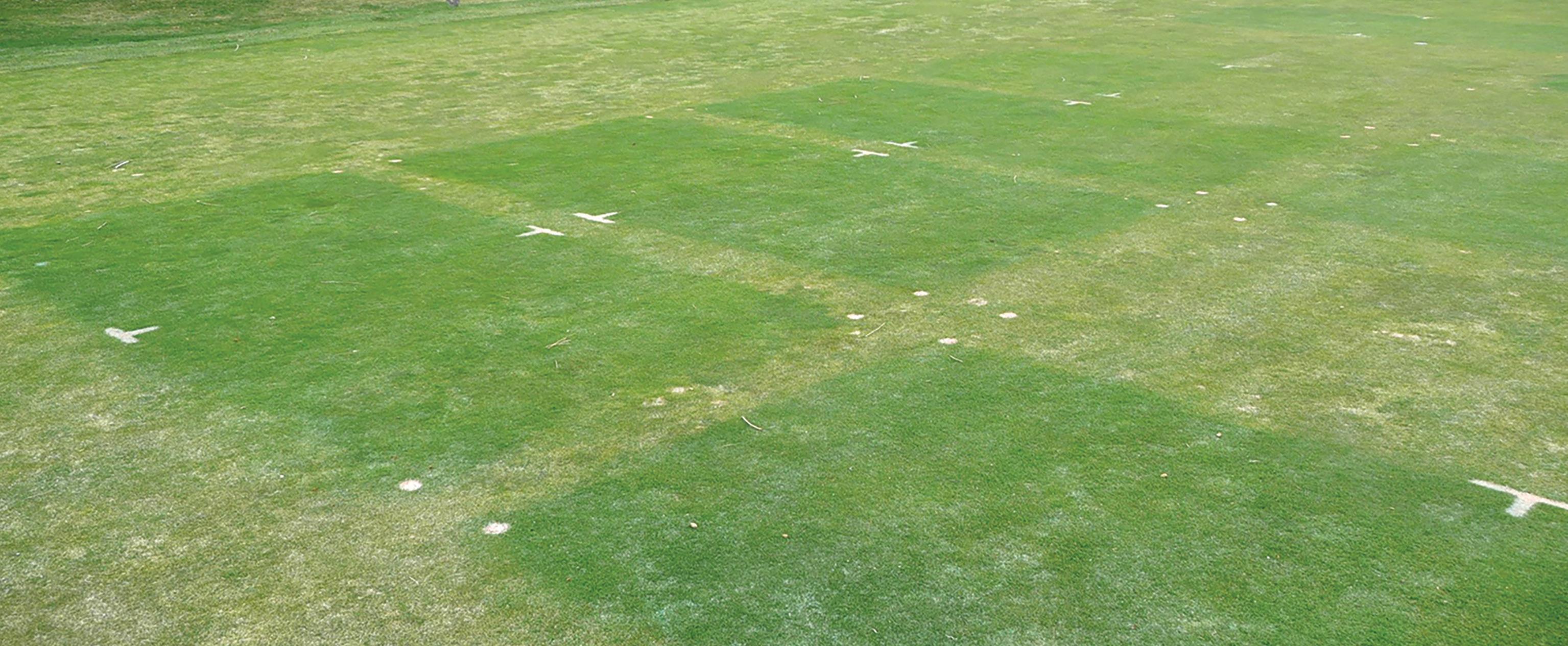
Safe – Non Phytotoxic – Tank-mix Compatible No Resistance - 25b EPA Exempt Fungicide

BioPlex Pathogen POWER+ provides an exciting opportunity for the golf course superintendent to find an inexpensive, dependable and high functioning disease control substitute to include in a fungicide rotation. And most importantly, without sacrificing performance results, compatibility or the bottom line (As low as $25-$49/acre per application).
Labeled for 36 Turf Disease Pathogens: Including Anthracnose, Fusarium, Phytophthora, Powdery Mildew, Pythium, Brown Patch, Dollar Spot, Verticillium, Agrobacterium, Bacterial Blast, Pseudomonas, Mosaic Viruses, and More.
Soil Drench Applications: Provide Dual Control for 9 Different Nematodes
BUDGET SENSITIVE VALUE… BROAD SPECTRUM - HIGH CONTROL - LOW COST ON SALE TODAY – EASY ON-LINE ORDERING AT BIO-PLEX.COM
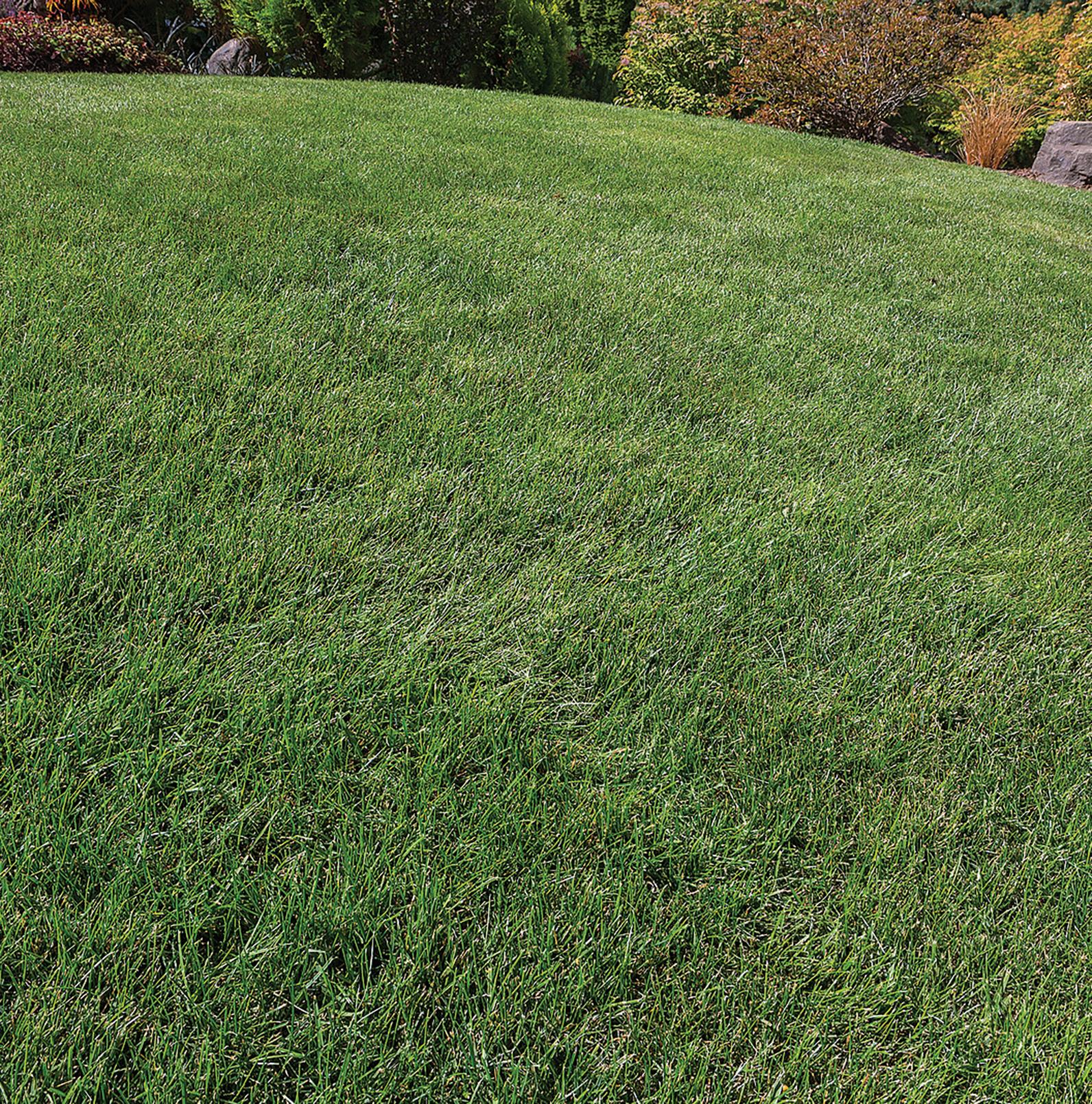
for more information

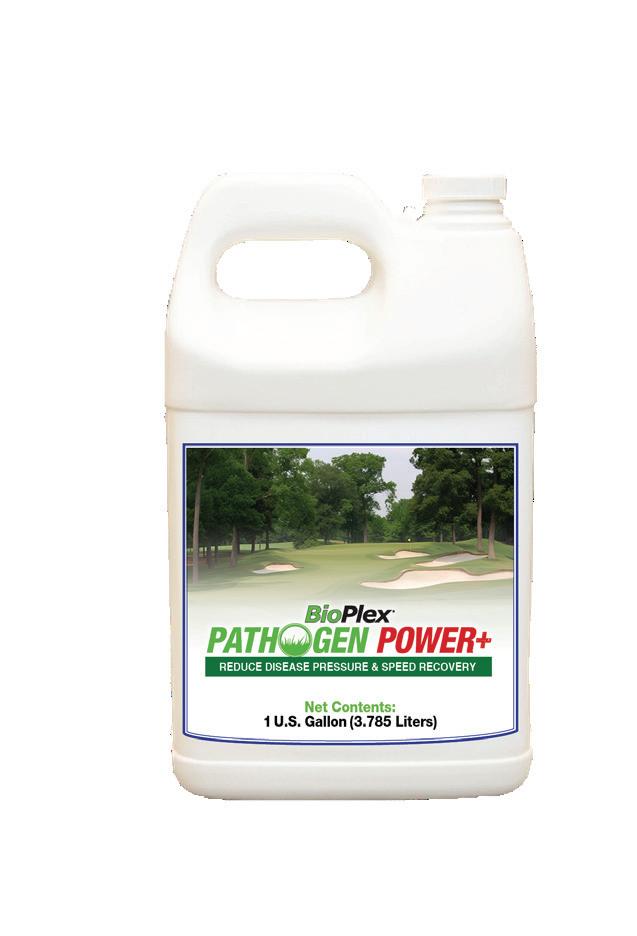
Agronomist - Tech Support 717-917-5126 (Voice - Text) bioplex@earthlink.net
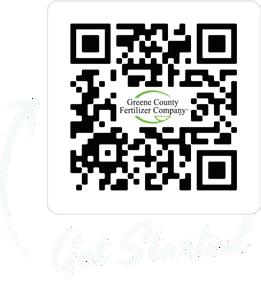



Virginia Tech, in conjunction with Virginia Turfgrass Council, hosted their annual Turfgrass Field Day on Thursday, June 27, at the Hampton Roads Agricultural and Research Extension Center.
Nearly 100 turfgrass professionals and enthusiasts braved 100-degree heat and humidity to come and learn how to incorporate cutting-edge research into their field management.
The day started off with a guided tour of the research plots. Presentations by Virginia Tech’s faculty emphasized the practical applications of their studies on turfgrass breeding, pest management, disease control and sustainable practices.
Rain held out just long enough for attendees to make their way inside for the classroom instruction. The second half of the field day did not dampen the enthusiasm for this collaborative learning opportunity.
Virginia Cooperative Extension (VCE) agents and Virginia Tech faculty spoke on regulations and best management practices for safety and sustainability. Attendees also had the opportunity to discuss questions directly with researchers.
“We aren’t here to give you a hard time, our goal is to support our growers and work as a team,” said VCE agent Nikita Higgins.
Importance of the research updates is growing each year, both to the industry and to elected officials. While many attendees stayed for the afternoon pesticide recertification class, nearly one third of the industry professionals exclusively attended for the updates and we were pleased when the Chief of Staff of a prominent State Senator attended to learn more about the HR-AREC and to thank us for distributing pollinator seeds to members of the General Assembly.
Thank you to all who attended this event to educate themselves how we can best support turfgrass.

